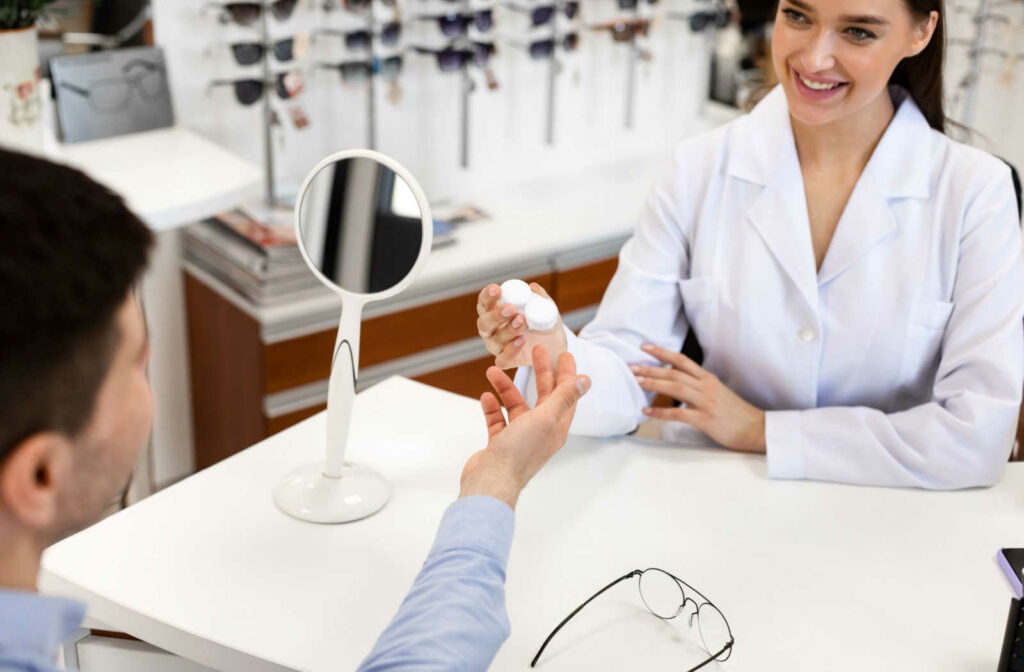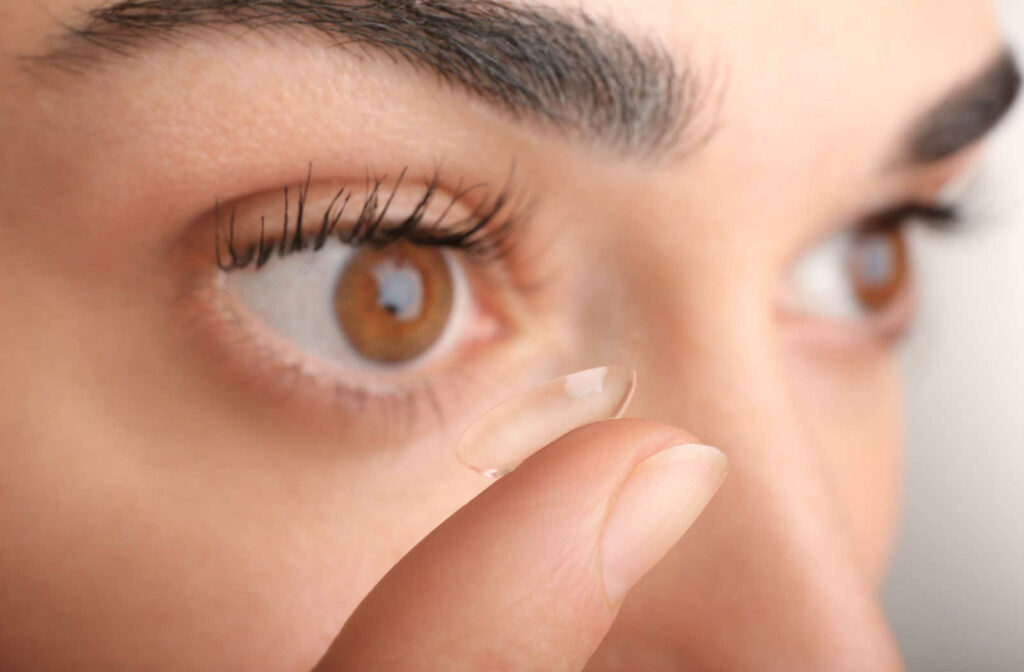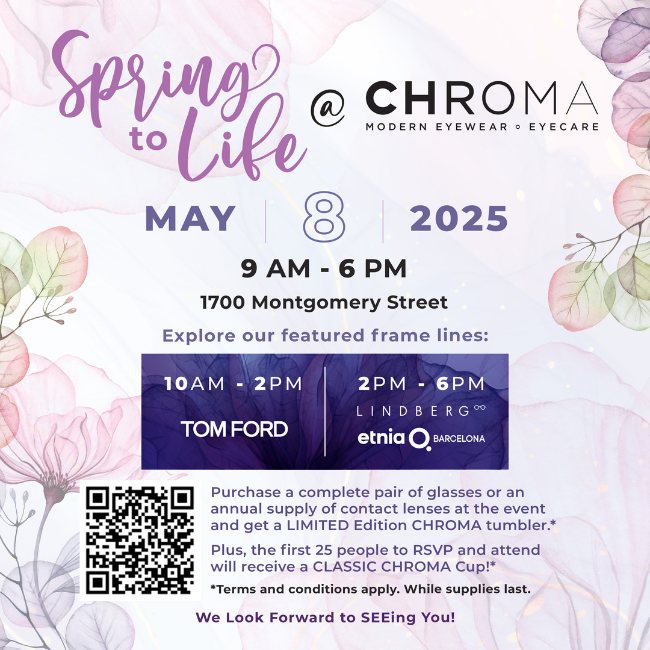A Contact Lens Style for Near & Far
Contact lenses are a convenient way to enhance vision so you can see comfortably. Whether you have difficulty seeing far-off distances (nearsightedness) or reading small print (farsightedness), there’s a contact lens option for your prescription. But what about when you need corrective lenses for both distances?
The good news is that more than one lens technology can support unique vision needs. Monovision and multifocal contacts can help people who need multiple prescriptions. But which is better? Learn about the differences between these lens types.
What Is Monovision?
Before understanding how monovision works, it’s crucial to know how binocular vision functions.
Binocular vision refers to how we use visual information from both eyes. Each eye detects and processes aspects of vision, including light intensity and depth perception, and then sends that information to the brain. The brain takes the separate information and combines it to create 3-dimensional images.
You may be familiar with left handedness and right handedness. Similar to having a dominant hand, we also have a dominant eye. In healthy vision, we depend on images from both eyes, but our brain may favor information from the dominant eye. It’s like being able to use both hands, but you use one hand more for writing or sports.
The dominant eye isn’t necessarily the stronger or better eye. The weaker or non-dominant eye can have better distance or near vision. Therefore, when both eyes are healthy, it’s possible to use one eye for specific vision tasks.
Monovision is the opposite of binocular vision. Instead of using both eyes to read or to see distances, one eye is used for close vision and the other for distances. Monovision contact lenses enforce this split focus with separate prescriptions for each eye.
Monovision contacts are commonly used for patients with presbyopia. The vision condition usually occurs as a natural result of aging but can be worsened by eye conditions. Presbyopia causes blurry near vision. Many people rely on reading glasses to support gradually worsening close vision.
Unfortunately, reading glasses only enhance near vision but can’t help someone with weak near and far vision. So instead, our eye doctors at CHROMA may prescribe monovision contacts, where the patients use their non-dominant eye for near-vision tasks with the help of a prescription lens.
Depending on the patient’s visual strengths, their dominant eye may require a contact lens to support distance vision (wearing 2 contacts, different prescriptions in each eye), or they may only require a contact for near-vision (wearing a single contact lens).
Another option for monovision is laser eye surgery. Our doctors at CHROMA modern Eyewear Eyecare may recommend corrective surgery to only correct near-vision in the dominant eye. Alternatively, an eye surgeon may enhance one eye for near-vision while the other is corrected for distance vision.
What are Multifocal Contacts?
Multifocal contact lenses combine multiple focal powers or prescriptions into a singular lens. The most common multifocal contacts are bifocal contacts. Bifocals have 2 optical power or prescriptions within the same lens. The lens is divided into sections or zones, each supporting vision for a different distance, usually near and far. Bifocals are a good choice for anyone who has two refractive errors, such as presbyopia and myopia. They allow you to maintain better visual clarity with a single pair of contact lenses.
Multifocal lenses specifically are a good option if you have more than two refractive errors. Commonly we see a combination of myopia, astigmatism, and presbyopia in older adults, for example. In this case progressive multifocal contacts or concentric multifocal contacts allow you to quickly adjust your vision as needed. Wearing multifocal contact lenses allows you to switch between multiple activities.
Multifocal contact lenses come in two basic designs: simultaneous vision and segmented.
In simultaneous vision designs, there are different zones of the lens that are designated for far and near, and sometimes for intermediate, vision. Depending on the object that is being looked at, the wearer determines which part of the lens provides the sharpest vision.
Segmented multifocal contact lenses on the other hand have a design that is similar to bifocal and trifocal eyeglass lenses. These lenses have a zone for distance vision in the upper and central zones of the lens, and the zone for near vision is located in the lower half of the lens. The far and near zones are separated by a visible line in the lenses. These lenses are made from rigid gas permeable (RGP) contact lens material. This is important to keep in mind as RGP lenses may not be the best option for all wearers.

Which Is Better: Monovision or Multifocal?
Unsurprisingly, there’s no one perfect answer. Like Goldie Locks, there might be one style that’s just right, but you may need to try a few before discovering your preferred fit.
Some people find adjusting to monovision challenging, as it changes how vision functions naturally. Some patients also notice decreased depth perception, as combining vision from both eyes is how we judge distances and depths.
Multifocals can be more comfortable for people with high visual demands. For example, people who rely on depth perception for daily tasks or their job may prefer multifocals.
Monovision can be the better choice for high prescriptions. Multifocals or bifocals may be unable to provide stronger prescriptions for people who need stronger prescriptions for higher levels of myopia (nearsightedness) or hyperopia (farsightedness).
Patients with high astigmatism (irregular eye shape) can also be challenging to fit, requiring a more expensive, complex design.
Choosing Your Contacts
Finding your contact lens style can involve trial and error, but you don’t need to search alone. The eye doctors at CHROMA can help determine what fits your lifestyle, prescription, and visual goals.
We’re dedicated to supporting our patients, providing personable care and quality lens technology. Talk to the eye care team at CHROMA modern Eyewear Eyecare today!



